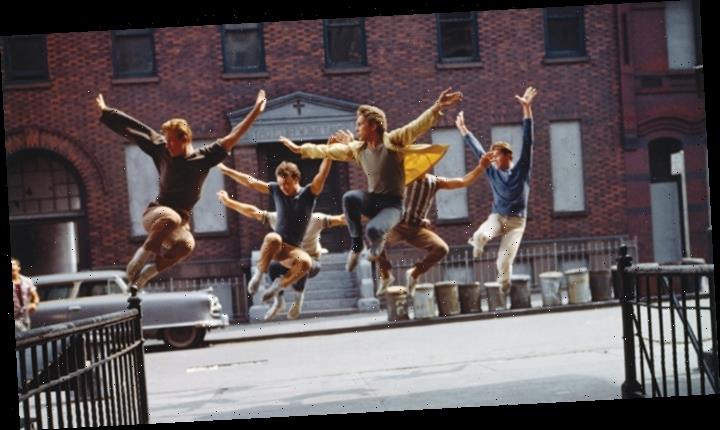In the century since its founding in 1919, United Artists has made and distributed hundreds of films and pioneered business models — such as UA Classics — that continue to resonate in the entertainment industry.
From the founders to the period between the early ’50s through the late ’60s when Arthur Krim and Bob Benjamin ran the company, to the ’70s when David Picker called the shots, there was a simple focus and philosophy.
“Movies that were successful were guided by very successful producers that worked with the top directors,” says Michael Barker, co-president and co-founder of Sony Pictures Classics and
a former executive at UA Classics and Orion Classics. “It’s really the philosophy and mission
of United Artists.”
That philosophy led to films such as “High Noon,” “West Side Story,” “Some Like It Hot,”
“Carrie,” “Midnight Cowboy,” “Rocky,” “Raging Bull” and “The Birdcage,” and the indie film biz
of today can trace some of its roots to UA.
Take, for instance, two early examples of modest productions that became critical and financial home runs for UA, the endgame for indie success: 1955’s Palme d’Or and best picture Oscar winner, “Marty,” and 1957’s “12 Angry Men.”
Barker recalls a conversation he had with Krim prior to home video revolutionizing the business.
“I asked him, ‘What was the most financially successful film in United Artists history?’ thinking he was going to say one of the Bond movies or ‘Pink Panther’ movies,” says Barker, noting those franchises as forebears to today’s tentpoles.
“And he said, ‘I think it’s ’12 Angry Men – It’s playing somewhere in the world, on television 24 hours a day, 365 days a year and it cost almost nothing to make.’”
During the 1970s, UA added to its formidable catalog with a string of critical and financial hits, including “Lenny,” “Network,” “Annie Hall” and “Coming Home.”
Mike Medavoy, who served as UA’s senior vice president of production during that era before co-founding Orion Pictures and serving as chairman of TriStar Pictures, recalls how the stars aligned for the first picture he started for UA.
While in previous job as a talent agent, he had taken a meeting with Kirk Douglas, who mentioned a potential film project of a play he’d done based on a book by Ken Kesey. While he didn’t end up with Douglas as a client, Medavoy assumed the actor was letting him down gently when he said, “You’re not going to be an agent for long, you’re gonna run a studio.”
Several years later, Medavoy was still a relatively new executive at UA. He had worked on films already in the pipeline, but was now tasked with selecting and starting a picture on his own. The first script to land on his desk was the project Douglas had mentioned, only now it was being shopped by his son Michael and Saul Zaentz. Medavoy greenlit the project and “One Flew Over the Cuckoo’s Nest” took flight.
The subsequent film took home best picture, lead actor, actress, director and adapted screenplay prizes at the 48th Academy Awards and Medavoy went on to many more films and, as Douglas had foreseen, running a studio.
While the big films garnered the attention of the industry, UA was also doing something that would have an impact on the film landscape for years to come.
In the early 1950s, UA had acquired the pre-1948 Warner Bros. catalog, demonstrating the value of classic films not only for airing on television, but also in smaller theaters in places such as college campuses. UA was also a player in the international market, acquiring films for overseas business but with limited domestic use. An opportunity was seen in these areas, and UA created a division to focus on films targeted for niche release — UA Classics.
“The ‘Classics’ designation came from the fact that it was mainly handling old classic movies that we’re in the UA catalog,” recalls independent producer Ira Deutchman, also a film professor at Columbia University who served as director of advertising and publicity for UA Classics. Adding domestic first-runs of current overseas hits was what kick-started the division.
“That’s really the moment when the now-traditional notion of what a classics division is was born. Other studios had classics divisions that were handling their catalogs, but UA was the first to take new [foreign] films and put them out theatrically.”
United Artists released such foreign films as Ingmar Bergman’s “Persona,” a host of British hits including Beatles’ pics “A Hard Day’s Night,” “Help!,” “Yellow Submarine” and “Let It Be,” the Pink Panther series, Jacques Beineix’s “Diva,” Francois Truffaut’s “The Woman Next Door” and Rainer Werner Fassbinder’s “Veronika Voss.”
Working alongside Deutchman at UA Classics as director of acquisitions was Donna Gigliotti, now president of Tempesta Films and producer of films including “Hidden Figures,” “Silver Linings Playbook,” “The Reader” and “Shakespeare in Love” for which she took home the Academy Award for best picture.
“It was the first specialized division within a major studio that was charged with acquiring
and releasing what were then called ‘specialized films,’” Gigliotti says. “UA Classics was the grandmother of Focus Features, A24 and Fox Searchlight and Roadside Attractions.”
Source: Read Full Article
